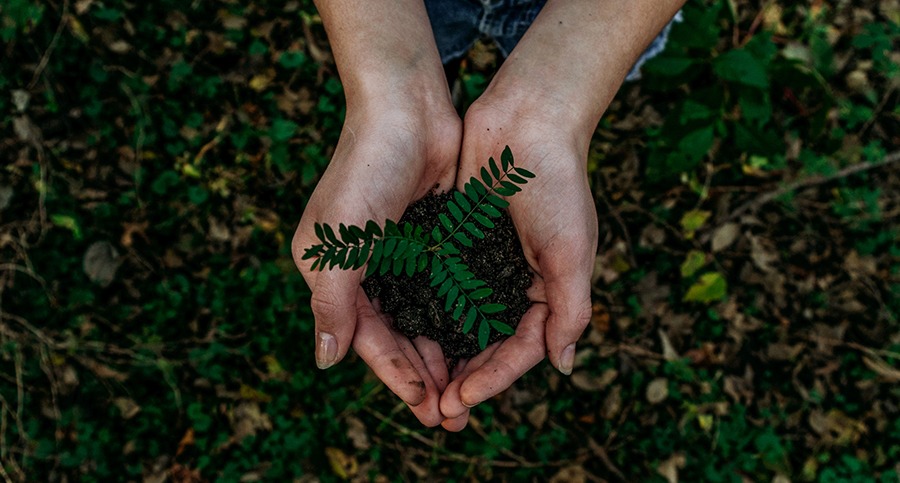Introduction: The Vital Role of Wetlands in Water Pollution Control
Wetlands are essential ecosystems that play a key role in controlling water pollution. They act as natural filters, helping to remove harmful substances such as excess nutrients, sediments, and pollutants from water before it reaches larger bodies like rivers and lakes. As water passes through a wetland, plants and soil absorb and break down many of these contaminants. In addition to filtering water, wetlands also help manage stormwater by absorbing excess runoff, which reduces flooding and erosion. This makes them important not only for water quality but also for protecting nearby communities and ecosystems (Sharma & Ayuba, 2024).
Despite their value, wetlands are often overlooked and threatened by human development and pollution. Protecting and restoring wetlands is vital for maintaining clean water and supporting overall environmental health. Their ability to filter, store, and slow water makes them one of nature’s most effective tools for pollution control (United States Environmental Protection Agency, 2025). Which is why it is also important to introduce THRIVE’s Foundational Focus Factors (FFFs), Integral Thinking, Systems Thinking, and Strong Sustainability, early in our understanding of wetland conservation. These concepts provide a guiding framework for recognising wetlands not just as isolated areas, but as vital parts of larger ecosystems. Considering these principles from the outset helps ensure wetlands are protected, regenerated, and allowed to flourish as living systems that support thriving environments.
Forests as Nature’s Water Filters: A Hidden Ally
Forests are vital natural water filters and storage systems. When rain falls, trees and vegetation absorb and slow its flow. This allows water to seep into the soil, replenish aquifers, and support drinking water supplies and agriculture (UNDP Climate Adaptation, 2023). Their roots stabilise soil, reducing erosion and maintaining steady streamflow, which helps mitigate both floods and droughts.
All forests influence hydrology through their impact on the water cycle. They regulate streamflow, recharge groundwater, and even contribute to atmospheric moisture and precipitation through evapotranspiration. Forests also filter out sediments and pollutants, producing high-quality water for people, industries, and ecosystems. Land-use decisions have far-reaching impacts. Deforestation may temporarily increase water flow, but ultimately reduces water quality and disrupts precipitation patterns, as seen in the Amazon and Congo River basins. Restoring forests can reduce sediment and nutrient runoff by 10% or more. Careful planning is needed to balance water quality with yield (Springaay, 2019).
In urban settings, trees reduce localised flooding by slowing stormwater and encouraging infiltration. Urban forests also offer co-benefits like improved air quality, shading, and mental health benefits (Jaikawana & Pagdee, 2024). Many cities, like Vienna, invest in upstream forest conservation to protect their drinking water sources, often a more cost-effective solution than building filtration infrastructure (Reilly, 2018). Overall, forests and trees are indispensable for reducing water pollution and improving water regulation and purification across both rural and urban landscapes.

The Forest Water Cycle.
Source: Oregon Forest Institute (n.d.)
How Wetlands Improve Water Quality and Protect Ecosystems
Wetlands provide a wide range of ecosystem services, including stormwater management and water quality improvement (Singh et al., 2019). Ecosystem components such as wetlands contribute to reducing water pollution and enhancing groundwater recharge. Wetlands are areas where shallow water covers land either permanently or periodically, serving as a transition between terrestrial and aquatic systems. They perform vital hydrological tasks such as storing floodwater, boosting groundwater recharge, and retaining nutrients and sediments (Nepal et al., 2024).
Wetlands improve water quality through natural mechanisms. As water flows through wetland vegetation and soils, sediments settle out, reducing turbidity. Nutrients like nitrogen and phosphorus are absorbed by plants or broken down by microbes, preventing harmful algal blooms. Wetlands also filter out contaminants such as heavy metals and pesticides, with microbial activity further detoxifying the water (Ferreira et al., 2023).
As organic sponges, wetlands maintain a rich biodiversity, filter water, and stop floods. Numerous plant and animal species, many of which are endangered, find homes in them. Additionally, wetlands provide economic, cultural, and recreational benefits through tourism, fishing, and birding. Over 2.5 million square kilometres are covered by more than 2,400 Ramsar Sites (wetlands) globally (Prasanya et al., 2024). Coastal wetlands also support carbon sequestration and Sustainable Development Goal 6 and Sustainable Development Goal 13 (Iram et al., 2022). With that said, as wetlands improve water quality, protect ecosystems, and aid in stormwater management, they illustrate the interconnectedness of systems, which is core to Systems Thinking.

How Wetlands Work.
Source: Stokes-Cawley (2021)
The Link Between Forest Health and Water Pollution Prevention
Forests cover approximately 31% of the global land area, about 4.06 billion hectares, and play a vital role in maintaining water quality. Healthy forests act as natural water filters, removing pollutants and impurities before water reaches rivers, lakes, and reservoirs. Many of the world’s largest cities depend on water sourced from forest-protected watersheds (Shah et al., 2022).
Forests not only filter water but also regulate its flow, reducing the risk of floods and droughts. In California, for example, national forests serve as sources, filters, and regulators of water, supporting communities, ecosystems, and industries (McKinney, 2023). Forests and water are deeply interconnected. Trees need large volumes of water to survive. In turn, they contribute to the water cycle through transpiration.
A healthy 30 metre tree can absorb and release up to 49,980 litres of water per growing season. This natural filtration system sustains ecosystems and reduces water treatment costs for municipalities. Increased forest cover in a watershed is directly linked to lower drinking water treatment costs, demonstrating the economic and ecological value of forest conservation (Somvichian-Clausen, n.d.). All in all, healthy forests play a crucial role in preventing water pollution.

3 Ways Healthy Forests Support Clean Water.
Source: Lyons & Gartner (2017)
The Dangers of Wetland and Forest Degradation
Wetland degradation owing to urbanisation, agriculture, and infrastructure development has caused a global loss of 21–35% of wetlands between 1700 and 2020, over 3.37 million square kilometres (Nyandwi & Ndikubwimana, 2024). This loss reduces vital ecosystem services, including freshwater supply, flood control, drought buffering, groundwater recharge, and carbon storage. It also compromises water purification, nutrient retention, shoreline stabilisation, and climate regulation (UNDRR, n.d.). As wetlands deteriorate, water quality declines, water flow alters, and flooding increases (Nyandwi & Ndikubwimana, 2024). These effects significantly threaten water security and human health through reduced access to clean water, food, and climate resilience (UNDRR, n.d.).
In the same way wetland degradation leads to increased water pollution, poor forest management has similar impacts. Logging, fertilisation, deforestation, and land conversion cause forest degradation. This leads to nutrient runoff, sedimentation, and diffuse pollution (Shah et al., 2022). Deforestation increases soil erosion, washing sediments, fertilisers, and pesticides into water bodies, causing algal blooms and reduced water quality (Boyle, 2024). Agriculture is the leading driver of deforestation, followed by poorly planned infrastructure (World Wildlife Fund, n.d.). In 2023, nearly 16 million acres of forest were lost. Recognising these interconnected impacts is essential to Integral Thinking. This values the systemic links between ecosystems, land use, and water quality.
Sustainable Management: Protecting Wetlands and Forests for Clean Water
Strong Sustainability emphasises the irreplaceable value of natural capital, making the protection of key ecosystems like wetlands and forests essential. These ecosystems not only reduce water pollution but also provide critical services such as carbon sequestration, stormwater management, and recreational green spaces in urban areas. To maintain these vital functions, wetlands and forests must be sustainably managed and safeguarded. Ensuring their continued health allows us to benefit from nature’s filtration systems and preserves their long-term capacity to support clean water and broader ecological resilience.
Conclusion and Call to Action (CTA): Innovative Solutions – Harnessing Nature’s Power to Fight Water Pollution
Protecting and restoring wetlands and forests is not just an environmental necessity. It’s an innovative, cost-effective solution to fight water pollution. These natural filters safeguard clean water, support biodiversity, and build climate resilience. As we face growing water challenges, we must invest in nature-based solutions, adopt sustainable land-use practices, and strengthen policies that prioritise ecosystem health. Let’s shift from short-term fixes to long-term, thrivable strategies that harness nature’s power.
Achieving THRIVE goals
Natural systems like wetlands, forests, and healthy ecosystems are essential for achieving Sustainable Development Goal 6 (SDG6: Clean Water and Sanitation) and Sustainable Development Goal 13 (SDG13: Climate Action). Additionally, they also support Sustainable Development Goal 14 (SDG14: Life Below Water) and Sustainable Development Goal 15 (SDG15: Life on Land). Wetlands filter pollutants, forests store carbon, and ecosystems help regulate water and climate.
- SDG6 promotes access to clean water, which nature supports by purifying and storing water.
- SDG13 focuses on climate action, where nature helps by absorbing carbon and reducing climate risks.
- SDG14 reduce marine pollution by filtering land-based waste before it reaches water bodies, protecting aquatic life and coasts.
- SDG15 promotes protecting, restoring, and sustainably using ecosystems vital for biodiversity and healthy land.
THRIVE goals go beyond sustainability, aiming for systems that are regenerative and resilient. Nature’s filters not only meet basic needs but also create conditions for people and the planet to thrive. SDG6 promotes clean water access, which nature supports by purifying and storing water, yet it often overlooks ecosystem regeneration. SDG13 focuses on climate action, but tends to ignore nature’s vital role in absorbing carbon and reducing climate risks. FFFs help fill these gaps, offering a path toward solutions that restore nature and support true thriving.
A Thrivable Framework
Wetlands and forests act as natural filters, playing a crucial role in maintaining clean water and healthy ecosystems. These systems absorb pollutants, regulate water flow, and support biodiversity, making them essential allies in the fight against water pollution. Within The THRIVE Framework, several FFFs highlight how we can protect and enhance these natural systems:
- Integral Thinking encourages a holistic view seeing the connections between environmental health, human well-being, and long-term resilience.
- Strong Sustainability recognises that ecosystems like wetlands and forests are irreplaceable and must be preserved for future generations.
- Systems Thinking helps us understand the complex relationships within and between natural systems, guiding smarter, more effective interventions.
Together, these FFFs support actions that go beyond sustainability toward a future where clean water, healthy ecosystems, and thriving communities are the norm, not the exception.
To learn more about THRIVE’s work, visit the Website and explore how it is making a difference. You can also follow the informative Blog and Podcast series, where you can dive deeper into the latest sustainability topics. Check out the comprehensive Whitepapers for research and analysis. Join the live Webinars and interactive Workshops where expert guests from various fields share valuable insights and answer your questions in real time. Sign up for the Newsletter to stay up-to-date with upcoming events, fresh content, and exclusive opportunities.























